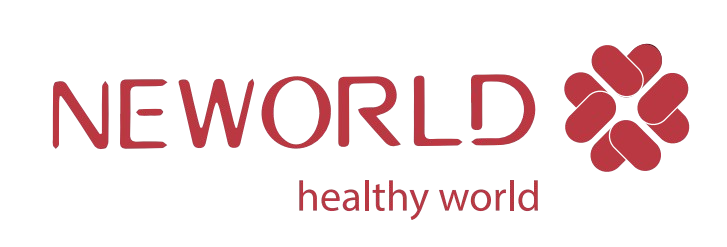In today’s fast-paced world, especially for busy Kiwis juggling work, family, and social commitments, finding time for fitness can seem daunting. However, modern research and expert insights demonstrate that even short, targeted workouts can deliver significant health benefits. Websites like verywell slots exemplify how effective routines are accessible and adaptable to hectic schedules. This article explores how busy New Zealanders can incorporate efficient fitness practices into their daily lives, supported by practical examples and evidence-based strategies.
Table of Contents
- How do time-efficient workouts fit into New Zealanders’ busy schedules?
- Which exercise types deliver maximum results in minimal time?
- What practical tips do experts recommend for maintaining consistency?
- How can busy Kiwis measure the impact of their fitness routines on productivity?
- What are the lesser-known benefits of targeted routines for busy professionals?
How do time-efficient workouts fit into New Zealanders’ busy schedules?
Assessing the typical daily routines of Kiwis seeking quick fitness solutions
Many New Zealanders lead active yet time-constrained lives, often balancing long work hours with family and community activities. According to recent surveys, over 60% of Kiwis report insufficient physical activity due to time limitations. The key is recognizing that even brief periods of exercise—10 to 20 minutes—can contribute to overall health. For example, a typical workday might include a 15-minute brisk walk during lunch or stretching before bed, which aligns with the World Health Organization’s recommendation of at least 150 minutes of moderate activity per week, achievable through short, consistent sessions.
Strategies for integrating short workouts into workdays and commutes
Inserting exercise into daily routines requires creative planning. For instance, some professionals perform quick bodyweight circuits—such as squats, push-ups, and lunges—during breaks. During commutes, Kiwis can incorporate active transit options like cycling or walking to the station. A practical example is the “deskercise” routine, involving seated leg lifts or shoulder rolls, which can be done at the office without special equipment. Such strategies not only save time but also reduce sedentary behavior, which research links to various health issues.
Balancing effective exercise with family and social commitments
Effective routines should complement, not conflict with, personal life. Family-based activities like outdoor walks or backyard games serve as both bonding time and physical activity. Scheduling workouts during family time or engaging children in active play can make fitness a shared goal. For example, a 20-minute weekend hike in New Zealand’s scenic parks offers both physical and mental health benefits, reinforcing the idea that quality time and exercise can go hand-in-hand.
Which exercise types deliver maximum results in minimal time?
High-Intensity Interval Training (HIIT) routines tailored for busy lifestyles
HIIT involves alternating short bursts of intense activity with recovery periods, proven to improve cardiovascular health and metabolic rate efficiently. A typical 15-minute HIIT session can burn more calories than an hour of moderate exercise and enhances endurance. For example, a Kiwis can do 30 seconds of sprinting followed by 30 seconds of walking, repeated eight times. Studies show that HIIT boosts mitochondrial function and insulin sensitivity, making it ideal for busy professionals seeking quick, impactful workouts.
Strength and resistance training exercises for quick muscle toning
Strength training enhances muscle mass, supports metabolism, and improves posture—crucial for those spending long hours at a desk. Resistance exercises using body weight, resistance bands, or dumbbells can be completed in 10-20 minutes. For instance, circuit routines that include squats, push-ups, and planks target multiple muscle groups efficiently. Incorporating such routines 2-3 times weekly leads to notable improvements in strength and functional fitness.
Quick yoga and stretching sequences to boost flexibility and mental clarity
Yoga and stretching are effective for reducing tension, increasing flexibility, and mental relaxation. Short sequences—such as sun salutations or targeted stretches—can be performed in under 10 minutes. A recent study indicates that even brief yoga sessions can lower cortisol levels and improve mood, which is beneficial for managing stress during busy days. Integrating deep breathing and mindfulness into these routines amplifies mental clarity, vital for productivity.
What practical tips do experts recommend for maintaining consistency?
Setting realistic goals aligned with busy schedules
Experts advise establishing attainable objectives, such as exercising three times a week for 15 minutes. Clear goals prevent burnout and foster motivation. For example, a Kiwi might aim to complete a quick morning workout thrice weekly, gradually increasing intensity or duration as habits form. Research indicates that achievable goals improve adherence and long-term success.
Using technology and apps to schedule and track workouts effectively
Digital tools can significantly enhance consistency. Fitness apps allow users to set reminders, log progress, and access tailored routines. For busy professionals, integrating these tools into daily planners ensures accountability. A study published in the Journal of Medical Internet Research found that app-based interventions increased workout adherence by 40%. For instance, setting morning alerts for quick workouts can make exercise a seamless part of the daily routine.
Creating personalized routines that adapt to fluctuating daily demands
Flexibility is vital. Developing routines that can be shortened or modified based on daily circumstances helps maintain consistency. For example, a 10-minute bodyweight circuit can replace a longer session if time is limited. Recognizing that some days may only permit brief activity helps prevent skipped workouts and reinforces the importance of regular movement, even in small doses.
How can busy Kiwis measure the impact of their fitness routines on productivity?
Identifying measurable improvements in energy levels and focus
Tracking subjective feelings of alertness and energy can be insightful. Many individuals notice increased productivity after short workouts, supported by studies showing exercise-induced dopamine release. Keeping a simple journal to note energy levels before and after activity helps quantify benefits over time.
Linking regular exercise to reduced stress and enhanced mental well-being
Physical activity activates endorphin production, reducing stress hormones like cortisol. For instance, a quick yoga session during lunch can lower stress levels, improving focus for afternoon tasks. Scientific evidence confirms that even brief exercise bouts can significantly decrease anxiety and depression symptoms, contributing to overall mental resilience.
Tracking progress through simple metrics and self-assessment tools
Progress can be monitored using tools like step counters, heart rate monitors, or wellness questionnaires. For example, recording daily step counts or tracking sleep quality provides tangible indicators of health improvements. Self-assessment scales, such as the Perceived Stress Scale, can help evaluate mental well-being linked to exercise routines.
What are the lesser-known benefits of targeted routines for busy professionals?
Enhancing posture and reducing work-related musculoskeletal issues
Targeted exercises focusing on back, neck, and shoulder muscles can prevent common complaints like pain and stiffness. Incorporating posture-strengthening routines, such as shoulder blade squeezes or core stabilization, is especially relevant for those working long hours at desks.
Improving sleep quality through physical activity
Regular physical activity, even in small doses, has been linked to better sleep patterns. For instance, a 10-minute evening stretch routine can help regulate circadian rhythms, leading to deeper, more restorative sleep—crucial for recovery and daytime alertness.
Fostering a sense of achievement and motivation in short bursts
Completing quick workouts provides a psychological boost, reinforcing a sense of accomplishment. This positive feedback loop encourages continued effort. For example, successfully completing a 15-minute HIIT session can motivate individuals to maintain their fitness journey, supporting long-term health goals.
“Even in the busiest schedules, small, consistent efforts can lead to transformative health benefits. The key is making exercise accessible, practical, and aligned with personal goals.”

